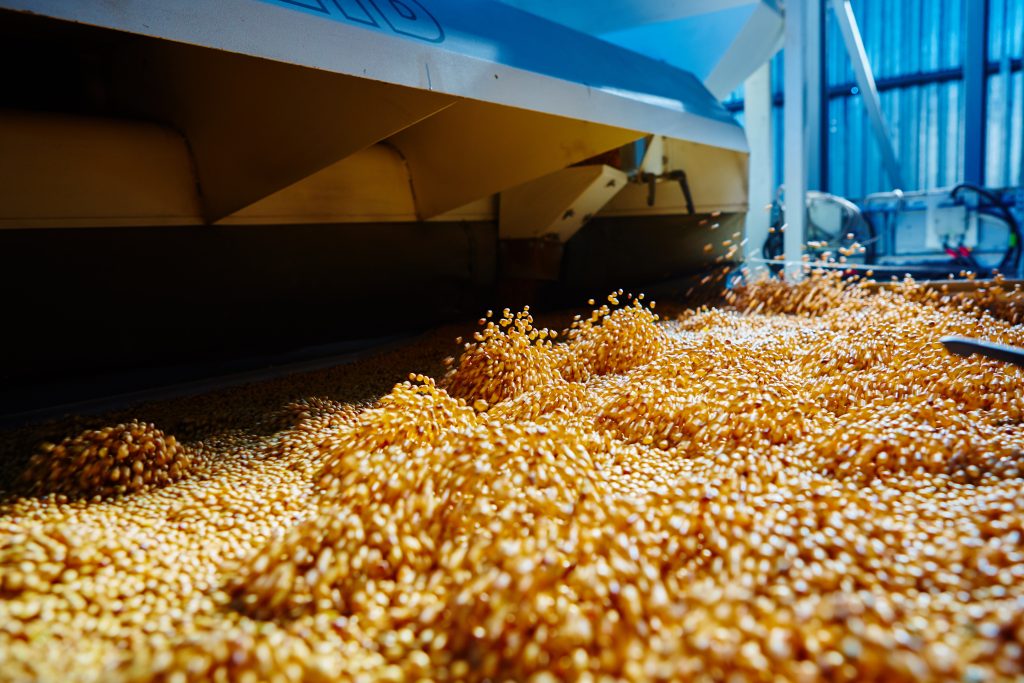
Bulk material processing is a critical aspect of many industries, including manufacturing, mining, agriculture, and construction.
However, many materials—powders, granules, and pellets—have challenging flow characteristics that can slow down processing operations. Flow aids can overcome these challenges to improve productivity and overall efficiency.
Common flow challenges in bulk material processing
A material’s physical properties can affect its flow patterns. These include particle size, shape, moisture content, and cohesive tendencies.
Particle size
Smaller particles tend to be more prone to cohesive forces and can easily clump together, leading to flow problems such as arching and bridging. That’s why fine powders like titanium dioxide and carbon black can be very challenging to work with, especially when they pass through feeders and hoppers.
Larger particles, on the other hand, have a tendency to interlock, impeding flow through hoppers or chutes. This is a common problem in the cement and mined materials industries.
Particle Shape
Irregularly shaped particles may interlock or form arches, hindering material flow. One mineral processing plant that worked with pebbles and crushed materials took over an hour to fill a supersack, with operators frequently stepping in to hammer the vessels.
Moisture Content
Moisture can increase particle cohesion and create adhesive forces between particles, leading to material agglomeration and blockages. On the other hand, excessively dry materials may become powdery and prone to dusting, which also causes flow issues.
This frequently occurs in the food industry. Many raw ingredients like butter or whey either have an inherently high fat and oil content. Others, like sugar or cocoa, have a tendency to attract and retain moisture.
The food industry also uses dry powders like preservatives, spices, and nutritional additives. These have to be added in very precise amounts, so even the slightest irregular flow can compromise an entire batch.
Cohesive Tendencies
Cohesive materials have a natural tendency to stick together due to intermolecular forces such as surface chemistry or electrostatic charges. This is common in the chemical, cement, and pharmaceutical industries which use binding agents, solvents, lubricants, and disintegrants.
These properties can cause common flow problems such as arching, bridging, ratholing, and segregation. These issues can lead to material blocks, uneven discharge, lower production, and increased downtime.
Flow Aids used in bulk material processing
Flow aids enhance material flow by breaking up cohesive masses, preventing material build-up, and promoting consistent discharge.
- Pneumatic flow aids. These use compressed air to break up cohesive friction and loosen material blocks. Examples include fluidizers, air cannons, and AirSweep.
- Vibrators. These use vibrations to loosen compacted materials, similar to shaking or hitting a ketchup bottle. Some plants still employ workers to hit vessels with a hammer; others use industrial vibrators or air knockers.
- Mechanical Agitators. These use gyratory forces rotating blades or paddles to break up material clumps and prevent bridging. Like vibrators, they use continuous agitation to dislodge stagnant material.
- Bin Activators. These combine vibratory or gyratory forces to dislodge compacted material.
Each flow aid has its pros and cons. Fluidizers, which use gentle aeration, are cheap and often pre-installed in vessels. However, gentle air pulses are usually only effective for light powders like flour.
Vibrators, mechanical agitators, and bin activators provide more power, but use a lot of electricity and can damage the vessel. Some powders or irregular particles can also become more compact when agitated.
AirSweep: best flow aid for bulk material processing
AirSweep is a unique flow aid that uses high-pressure air pulses that are more powerful and cost-efficient than vibrators, mechanical agitators, and bin activators. It can break up bridging, arching and ratholing, and promote first-in/first out flow.
AirSweep’s unique design and operation provide several advantages for bulk material processing:
- Versatility. AirSweep can be used in a wide range of industries and applications, including silos, hoppers, chutes, conveyors, and other material-handling equipment. It is proven effective for various materials, including powders, granules, pellets, and even sticky or cohesive substances.
- Reliability. AirSweep is made of high-quality materials and hand-assembled in the USA following strict quality control measures. It requires minimal maintenance and is designed to withstand the harsh conditions commonly encountered in industrial environments.
- Energy-efficiency. AirSweep’s controlled, sequenced pulses use less air and energy than other flow aids, which run continuously and have a limited activation radius. Thus, you need fewer units and resources to activate more material—and get more continuous material flow.
AirSweep improves overall plant efficiency
An AirSweep system can help you increase productivity and lower costs. Here are some key advantages that make it a worthwhile investment.
- Get on-demand flow. Preventing ratholing, bridging, and other material blocks that can affect material flow and operations. This leads to increased throughput, reduced downtime, and higher production rates.
- Lengthen machine lifespan. Unlike other flow aids, AirSweep prevents vessel and equipment wear and tear and extends the lifespan of machinery. This minimizes maintenance and repair expenses.
- Reduce waste. Material buildup and inconsistent discharge often lead to product waste. With AirSweep, all materials are properly discharged and utilized.
- Protect worker safety. AirSweep automates material flow. Workers don’t have to enter confined spaces, be exposed to potentially hazardous materials, or use manual methods that can lead to accidents or injuries.
- Comply with regulations. Consistent flow can help a process meet environmental regulations, health and safety standards, and quality control guidelines.
Optimize bulk material processing with AirSweep
AirSweep increases productivity, enhances equipment efficiency, and minimizes operational costs and material waste. Find out how AirSweep can help improve your process. Tell us about your material flow challenges, and get a free customized proposal.





Comments are closed